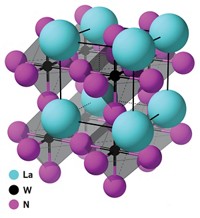Advertisement
Grab your lab coat. Let's get started
Welcome!
Welcome!
Create an account below to get 6 C&EN articles per month, receive newsletters and more - all free.
It seems this is your first time logging in online. Please enter the following information to continue.
As an ACS member you automatically get access to this site. All we need is few more details to create your reading experience.
Not you? Sign in with a different account.
Not you? Sign in with a different account.
ERROR 1
ERROR 1
ERROR 2
ERROR 2
ERROR 2
ERROR 2
ERROR 2
Password and Confirm password must match.
If you have an ACS member number, please enter it here so we can link this account to your membership. (optional)
ERROR 2
ACS values your privacy. By submitting your information, you are gaining access to C&EN and subscribing to our weekly newsletter. We use the information you provide to make your reading experience better, and we will never sell your data to third party members.
Materials
Improving Energy Conversion
Microscopy: Method shows best crystal orientation in nanomaterials
by Mitch Jacoby
July 15, 2013
| A version of this story appeared in
Volume 91, Issue 28

An obstacle to developing low-cost energy conversion devices is understanding why small differences in materials can strongly affect performance. Figuring out the relationship between the structure and function of an electrode material, for example, is especially challenging for nanoparticle aggregates.
Researchers have now developed an analytical procedure to scrutinize material structure and function with nanometer resolution across micrometer distances in such aggregates. The technique enables them to design a better electrode for solar energy conversion.
The group used transmission electron microscopy (TEM) to image the spatial distribution and orientation of nanocrystals within aggregates. Then, by using a conducting atomic force microscopy method, they correlated the TEM information with the pathways that electrons follow as they move through the material. They used the combo method to probe electron transport in various nanoparticle-based iron oxide electrodes. The electron-transport proficiency of this cheap material makes it useful for generating hydrogen via light-driven water splitting. Although the electrodes they studied were similar, some worked well, while others did not.
The key finding of the team, which includes Scott C. Warren of the University of North Carolina, Chapel Hill, is that the relative orientation of adjacent nanoparticles greatly affects charge transport. A small orientation mismatch is alright, but a large mismatch results in electrical barriers that block current flow between adjacent grains. The upshot is that by identifying “winning” crystal orientations and tailoring the preparation method to favor them throughout the electrode, the group made a device that achieves a record-setting photocurrent for this class of materials (Nat. Mater. 2013, DOI: 10.1038/nmat3684).
“These results represent an important step forward in developing nanostructured materials for next-generation energy conversion devices,” says solar-fuel specialist Roel van de Krol of Technical University of Berlin.
Boston College chemist Dunwei Wang adds that the study helps explain why some nanostructures function better than others. “This work will be of value to photoelectrochemistry studies in general,” he adds.





Join the conversation
Contact the reporter
Submit a Letter to the Editor for publication
Engage with us on Twitter